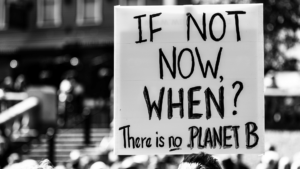Religion in India can be categorized by a diverse school of beliefs and practices. India is the birthplace of four major religions in the world, Hinduism, Buddhism, Jainism, and Sikhism.
Given the current religiopolitical circumstances where the environment seems quite intense, at times it almost feels like we are sitting on an active time bomb of sorts and things can go severely wrong at any moment. We do see bits and pieces of the repercussions, big or small incidents almost daily. All we have to do is to switch on the television or visit any of the social media platforms.
Even if we actively try and avoid it by simply changing the channel momentarily. It is simply impossible to enjoy the bliss of ignorance for long, the topic will catch on and start scratching the inside of your head. Now how one reacts to it is a matter of inward speculation, and I’m sure you’ll find yourself calling or turning the music loud enough to just escape.
But, is there an escape from all this? Can we ignore the situation? It seems that the heat is increasing and there is a minimal yet annoying burning sensation. Putting the symbolism at rest, imagine the feeling that you might get when you sit with a Muslim friend (given that you are a Hindu) or vice-versa, while Mr. Sudhir Chaudhary (Zee News) is delivering one of his glorious DNA reports on something religious. Well, if I put myself in that situation, I will be physically uncomfortable. Now if your eyes will fill with the shine of self-righteousness, you may not like the rest of the article.
Also, I must clarify that it is not just about the Hindu-Muslim conflict that we are going to talk about there are other religions involved as well. For example, multiple churches were vandalized by the members of Bajrang Dal (a right-wing Hindu political party) in Haryana during the 2020 Christmas celebrations, the justification provided was that these Christians were only talking about Christ and not Hindu gods and it was a clear case of discrimination against “Indian culture” and sentiments of Hindu’s were hurt. Perplexed seems to be an understatement, although I imagine a lot of people will agree with their point of view (terrifying? Well, we all know it’s true)
Roman Stoic philosopher Seneca (also known as Seneca the younger) once said, “Religion is regarded by the common people as true, by the wise as false, and by the rulers as useful”. Now I am not saying that all the people who regard religion as true are stupid but, you get the point. In the currents scenario, I find these words to be an absolute fit. Governments, be it the center or state of this country or the majority of the other countries do seem to use religion to a great extent for political gains.
Look at the UP elections of 2022. The major hoopla (for the lack of a better word) was about the Hindu-Muslim “equation” and countless casts and social groups. I mean political parties doing the same thing we blamed the British rule for and it was heartbreaking to see the news channels being used as foot soldiers promoting their archaic and dogmatic propaganda.
Now let’s look back into history and try and ask ourselves a question. Is it, that we never learned religious tolerance as a nation or society, or more disturbingly, we have unlearned it with time? I must also clarify that it is not about the religious tolerance of governments or political parties (we all know that the state does not ask one’s creed while deeming them eligible for a benefit provided by the state, cast on the other hand is a whole different story). I am talking about the intolerance amongst citizens of the country, for example; why a Muslim family can not rent a house in certain areas? And, this is happening in the capital of the country. Why are Hindus (some of them) afraid to visit certain areas? All in the name of religious disagreements.
The constitution of India with its Forty-Second Amendment in 1976 added the word Secular to its preamble.
The Amendment changed the description of India from a “sovereign democratic republic” to a “sovereign, socialist secular democratic republic” (and also changed the words “unity of the nation” to “unity and integrity of the nation”).
However, the Supreme Court of India in the 1994 case S. R. Bommai v. Union of India established the fact that India was secular since the formation of the republic. The judgment established that there is a separation of state and religion. It stated “In matters of State, religion has no place. And if the Constitution requires the State to be secular in thought and action, the same requirement attaches to political parties as well. The Constitution does not recognize, it does not permit, mixing religion and state power. That is the constitutional injunction. None can say otherwise so long as this Constitution governs this country. Politics and religion cannot be mixed. Any State government which pursues nonsecular policies or non-secular course of action acts contrary to the constitutional mandate and renders itself amenable to action under Article 356”
Thanks to the extremely complex nature of the Indian Constitution, it can further be added that secularism in India is understood to mean not a separation of religion from state, but a state that supports or participates neutrally in the affairs of all religious groups and as well as atheism. So, we can put it as mildly or extremely confusing depending on your ability to decipher polity, just kidding, everyone is an intellectual nowadays.
Looking at the current state of affairs, a lot of words written above may seem like gibberish. And, all of us are to be blamed.
Now that we have somewhat learned, what the constitution says about religion, let us go a little further back in history.
The history of secularism in India is a lot older than we expect it to be and it has seen its fair or rather unfair share of ups and downs.
Ashoka about 2200 years ago, Harsha about 1400 years ago accepted and patronized different religions. The people in ancient India had freedom of religion, and the state granted citizenship to each individual regardless of whether someone’s religion was Hinduism, Buddhism, Jainism, or any other. Ellora cave temples built next to each other between the 5th and 10th centuries, for example, shows the coexistence of religions and a spirit of acceptance of different faiths.
The Ashoka, Rock Edicts XII, from about 250 BC reads, “There should not be the honor of one’s own (religious) sect and condemnation of others without any grounds”. Quite evident that the great Ashoka saw the significance of religious freedom, at least on paper.
Now the downfall of religious tolerance came about with the arrival of Islam and the establishment of the Delhi Sultanate in North India by the 12th century, followed by Deccan Sultanate in Central India. The political doctrines of Islam, as well as its religious views, were at odds with doctrines of Hinduism, Christianity, and other Indian religions. The establishment of new temples and monasteries was forbidden and as in the Levant, Southeast Europe, and Spain, Islamic rulers in India treated Hindus as Dhimmis (a term for non-Muslims living in an Islamic state with legal protection) in exchange for an annual payment of jizya taxes, in a sharia-based state jurisprudence.
It was during the reign of Akbar that the situation improved as he was a strong advocate of religious tolerance and brought about legal changes to promote the policy. Akbar sought to fuse ideas, professed equality between Islam and other religions of India, forbade forced conversions to Islam, abolished religion-based discriminatory jizya taxes, and welcomed the building of Hindu temples.
Although this rise of secularism was short-lived and as his great-grandson Aurangzeb took control of the sultanate, he reverted to treating Islam as the primary state religion, destruction of temples, and reimposed religion-based discriminatory jizya taxes.
Then came the British Raj although righteously considered a cruel tyrant, the British did mark the end of equal hierarchy between Islam and Hinduism, and reintroduced the notion of equality before the law for Hindus, Christians, and Muslims. The British Empire sought commerce and trade, with a policy of neutrality to all of India’s diverse religions.
However, as time passed Britishers got reminded of the quote by Seneca and subtly started using religion as a tool for mass manipulation and promote their infamous policy “Divide and Rule” (which is still practiced by almost all political parties in our sovereign nation). The divide and rule policy contributed to promoting discord between communities. The Morley-Minto reforms provided a separate electorate to Muslims, justifying the demands of the Muslim league.
In the first half of the 20th century, the British Raj faced increasing amounts of social activism for self-rule by disparate groups such as those led by Hindu Gandhi and Muslim Jinnah; the colonial administration, under pressure, enacted several laws before India’s independence in 1947, that continue to be the laws of India in 2013. One such law enacted during the colonial era was the 1937 Indian Muslim Personal Law (Shariat) Application Act, which instead of separating state and religion for Western secularism, did the reverse. And the political parties that followed in the free country have only made the situation continuously worse and all in the name of vote bank policies.
Given the current political and legal scheme of things, the possibility of an inclusive and harmonious solution is almost unimaginable. To understand it in a different way let’s see how religion and state in practice are not entirely separate by the example of, The Indian Muslim Personal Law (Shariat) Application Act of 1937 which continues to be the law of land of modern India for Indian Muslims, while parliament-based, non-religious uniform civil code passed in the mid-1950s applies to Indians who are Hindus (which includes Buddhists, Jains, Sikhs, Parsees), as well as to Indian Christians and Jews.
Now given the sheer number of people, especially political parties, and the delicate thread that this whole religious ecosystem is hanging on in this country a slight change in the legal system can start a severely destructive chain of events as proved by the events of the recent past, be it the whole Citizenship Amendment Act conflict, ban on cow slaughter and the following mob lynching incidents, riots and numerous other disturbances.
One thing that also often gets lost in translation, especially in the context of the perception of India as being a religiously intolerant nation, is the difference in the meaning of secularism in India and the west. In the West, the word secular implies three things: freedom of religion, equal citizenship for each citizen regardless of their religion, and the separation of religion and state (polity). In contrast, in India, the word secular means a thorough-going separation of religion and state.
It almost seems like an unsolvable puzzle, doesn’t it? And, it almost is. The hope is in the “almost” part of it. Perhaps the answers lie within the differences in the definition of secularism in India and the west. The past can also help as it always has and always will if we look for the answers with an open mind.
We also need to let go of the past and try and remember to focus on the good things in all religions. We need to be unprejudiced and forgiving and it applies to all the people. I almost sound like an optimist (I have never considered myself one) but perhaps that is exactly what we need.
Rather than stretching it out, I would like to end it with another and rather a long quote by Ernest Becker, the American cultural anthropologist and author of the 1974 Pulitzer Prize-winning book, The Denial of Death, “Religion has the same difficult mission as Freud: to overcome the fear of self-knowledge. Self-knowledge is the hardest human task because it risks revealing to the person how his self-esteem was built: on the powers of others in order to deny his own creatureliness and death. Character is the vital lie that covers over the painful ambiguities of man’s worm-likeness as well as his godlikeness. Men deny both in order to tranquility live in the world”.










